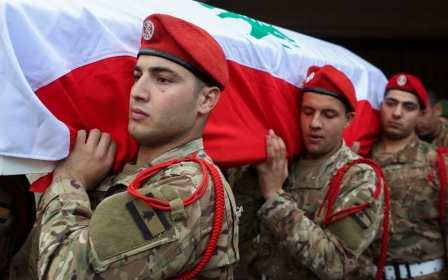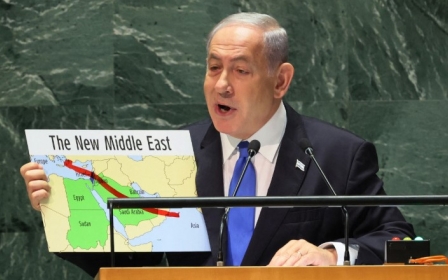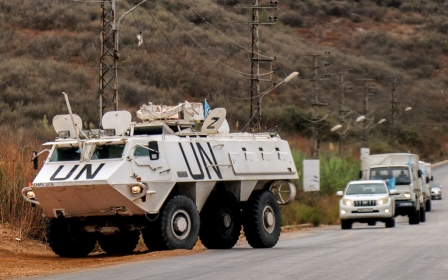Mass burials and unidentifiable bodies: Horror accounts of Israeli attacks in south Lebanon
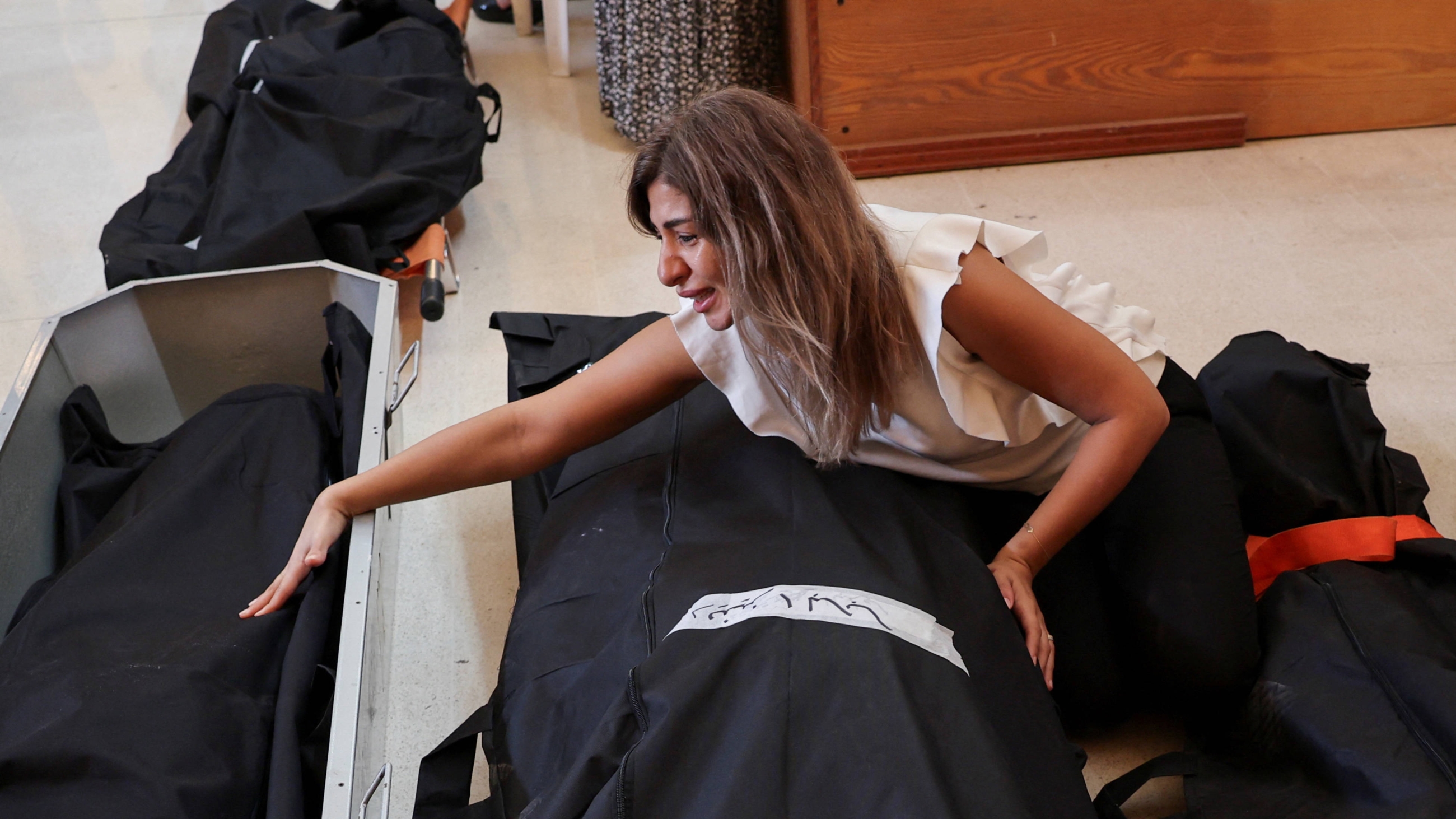
In the small village of Ain al-Delb in southern Lebanon, a doll in a red dress, yearbooks and tiny slippers lay on top of a mountain of rubble.
Other personal belongings are scattered around the remains of a residential building that, just over a week ago, was flattened in an Israeli strike, burying dozens of men, women and children under slabs of thick concrete.
Seventy-one people were killed and over 58 wounded - the single deadliest strike on record since Israel and Hezbollah began fighting on 8 October 2023.
A funeral for those who died was held on 1 October, where mourners put them to rest in a mass grave in the nearby city of Saida.
“The building was full of families who weren’t active in any military activities,” the Mufti [Muslim legal expert] of Saida, Salim Soussan, told Middle East Eye from his office in the city.
New MEE newsletter: Jerusalem Dispatch
Sign up to get the latest insights and analysis on Israel-Palestine, alongside Turkey Unpacked and other MEE newsletters
Soussan heads the organisation of burials in the southern city. According to Islamic practice, the body of the deceased is usually washed, covered with a white cotton shroud, and then prayed over before burial. But Israel’s strike on Ain al-Delb left some of “the bodies dismembered”, making it impossible to perform the Islamic burial rituals, the religious leader said.
The horrors of Ain al-Delb were not the only ones Soussan has witnessed since Israel escalated its attacks on Lebanon over two weeks ago.
He said he buried around 10 people who were killed on 23 September, when Israel carried out heavy bombardments across the country - their bodies had also been so severely damaged that they were unidentifiable.
Lebanon’s health ministry announced on 4 October that Israeli attacks have killed over 2,000 people, including 127 children and 261 women.
The Israeli military says its attacks are aimed at Hezbollah targets, but there have been mass civilian casualties and civilian infrastructure, ambulances and civil defence personnel have also been hit.
‘He couldn’t save his wife and children’
At al-Hamshari Hospital in Saida, a Palestinian father of three young girls lay immobile in a bed in the second floor's Intensive Care Unit. His pelvis was crushed under a slab of concrete in the Ain al-Delb attack and he had been hospitalised for almost a week when Middle East Eye visited.
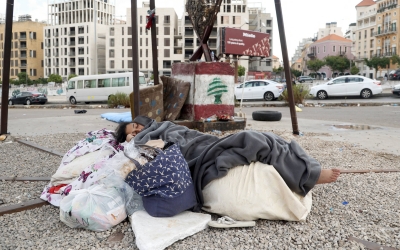
Only one of his daughters, three-year-old Fatimah, has survived. His youngest, two-month-old Razan, and oldest, five-year-old Rayan, were killed in the Israeli strike, along with his wife.
“He jumped out of the door [into the stairwell] carrying his child Fatimah, but he couldn’t save his wife and other children,” his brother, sitting at his bedside, recounted to Middle East Eye, as the father was too tired to speak.
The brother, who requested they both remain anonymous, said that his sister-in-law, Razan and Rayan were still in the kitchen when the building collapsed and were buried deep inside the rubble.
Al-Hamshari Hospital treated 10 patients from the attack, according to Ziad Abu al-Ainain, the head of the emergency and ambulance unit of the Palestinian Red Crescent Society (PRCS) in Lebanon.
Abu al-Ainain also works at the hospital, which, with the support of the PRCS, offers discounted healthcare services to Palestinians.
The father had just fled with his wife and daughters from Ghazieh, about five kilometres south of Saida city, which Israel has hit heavily in recent weeks. Like many of the mori than 100 people in the apartment building, they had hoped it would be safer than their homes further south.
“Chaos. It was chaotic,” Younis Yassin, the head nurse at al-Hamshari Hospital, told Middle East Eye, describing the night of the Ain al-Delb attack.
As he rushed to his next patient, Yassin said that those from Ain al-Delb came to the hospital with multi-trauma injuries - to the head, chest, abdomen and lower extremities - similar to other victims of Israeli attacks he has treated.
‘Danger all around us’
Upstairs on the hospital’s fifth floor, Abdul Azad Hammoud lay silent. He had suffered significant memory loss due to a severe head injury he sustained in an Israeli attack around 25 September, his wife, Bara’a Hammoud, told Middle East Eye.
'He jumped out of the door [into the stairwell] carrying his child Fatimah, but he couldn’t save his wife and other children'
- brother of a survivor of the Ain al-Delb attack
Hammoud had been volunteering with Lebanon’s civil defence, just outside their home in Burj Shemali camp for Palestine refugees near Lebanon’s southern city of Tyre, when an air strike hit the area, Bara’a said.
On 3 October, Lebanon’s health ministry said that 40 paramedics, firefighters and healthcare workers were killed in Israeli attacks over three days.
The Israeli military has accused Hezbollah of using ambulances to transport combat equipment, and warned medical teams to stay away from Hezbollah “elements”, but provided no evidence to support this claim.
At least 10 firefighters were killed in an Israeli strike in southern Lebanon on 7 October. They had been “ready to go out on a rescue mission” from a municipal building when it was struck, according to a ministry statement.
The Israeli military told the BBC that it conducted a “precise operation” on “several Hezbollah terrorist operatives who were using a fire station as a military post during combat”.
At the hospital, Bara’a said her husband had been on a mission with civil defence personnel to dig graves for “martyrs” of Israeli bombardments when they were caught in the Israeli attack.
After her husband is discharged, Bara’a said they will return to their home in Burj Shemali camp because they do not have another place to go.
“There is danger all around us,” she said.
The invasion 0f 1982
Hassan Kotob, a political analyst from Saida, turned toward the city’s seafront, just outside the Mufti’s office.
“In 1982, Saida was completely destroyed,” he recounted, thinking back to Israel’s invasion of Lebanon and subsequent 18-year occupation of the country's south.
“Israel came here and shelled everything, from the sea too,” he said.
The Israeli army on 7 October warned that it is “obliged to prepare operations in Lebanese waters,” telling all fisherman and people on the southern coastline, from the border city of Ras Naqoura to Saida, to leave.
Kotob said that Israel's objective is to isolate Hezbollah from the land and sea, cutting off their critical routes for supplies, weapons, and other support. “They are testing [Hezbollah’s] capabilities and their will to fight,” he said.
Like many Lebanese, Kotob believes that Israel would likely occupy parts of south Lebanon again.
In his Saida office, Salim said that he feared the war would become worse than what he saw in 1982.
“This time the strikes are different, they are stronger,” he said.
“We need to show the world what’s happening in the Middle East, how innocent people, women and children, are dying in their homes.”
Middle East Eye delivers independent and unrivalled coverage and analysis of the Middle East, North Africa and beyond. To learn more about republishing this content and the associated fees, please fill out this form. More about MEE can be found here.



